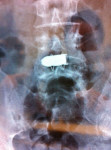Back Pain Treatment Options
Back pain is often caused by wear and tear. Slipped disc, spinal stenosis and bone spurs are degenerative conditions of the back, where your spine structure deteriorates progressively. As one ages, these issues may cause back pain and affect your daily activities such as balance and movement.
Spinal Injections (Percutaneous Nerve Root Block, Facet Joint Block)
Spinal injections can be a useful tool in alleviating the pain in many degenerative conditions of the back (e.g. slipped disc, spinal stenosis, bone spurs), and it can help speed up the recovery process. The spinal injections are performed under local anaesthesia or light sedation. The procedure involves you lying on a special operating table which allows x ray images to be taken of your spine. A fine needle will be inserted to the target area of interest to administer medications to help your nerves and/or spinal joints.
Percutaneous Disc Decompression e.g. Nucleoplasty
In situations where the problem is due to a bulging disc irritating your nerves, percutaneous decompression of the disc may be helpful in alleviating your symptoms. The procedure aims to reduce the pressure on the nerves by using radiofrequency to cause a small volume reduction in the disc. You will be gently sedated for the procedure, and again, this is performed with the help of x-ray images taken on your affected spine. You need to wear a back removable brace for 8 weeks.
Minimally Invasive Microendoscopic Discectomy

When your disc has slipped or bulged to the extent that percutaneous decompression does not work, you have the option of microendoscopic discectomy, which is minimally invasive and uses the microscope, a key factor in safety during spine surgery.
General aneasthesia will be administered for the minimally invasive spine surgery, and a tube (Figure 1) will be placed accurately at the area of interest with the help of x-ray images. A microscope will be used to illuminate and magnify the surgical field. This will enhance the safety and effectiveness of the surgery. You will be able to go home the next day. You need to wear a back removable brace for 8 weeks.
Dynamic Stabilization

In cases where you have significant backache or exhibit spinal instability, dynamic stabilization can be a viable option. It “internally splints” and offloads your affected spinal segment without actually fusing or “locking” the segment, allowing the preservation of flexibility. This surgical procedure maybe done together with decompression of the affected nerves using the operating microscope. The dynamic spacers can be inserted via a minimally invasive fashion (Figure 2). You need to wear a back removable brace for 8 weeks.
Artificial Disc Replacement

Artificial replacement of the discs of the back are good procedures in suitable candidates. In general, if you are under 60 years and the problem is due to a single disc of the back, you maybe a suitable candidate for this surgery (Figure 3). The surgery will involve general anaesthesia, and you lying face up.
Using x ray images real time, we will remove the disc from the front thoroughly so that the nerves are free, and subsequently insert an artificial disc into the original disc space. This device is made from a combination of metal (either titanium or cobalt/chromium) and plastic. Depending on the situation, you will most likely need to wear a back brace for several weeks.
Minimally Invasive Spine Fusion
Small incisions are made and we can access your spine safely and effectively using specially designed retractors, real time x ray images, and operating microscope (Figure 4). In the low back, your affected disc will be removed in a minimally invasive fashion. A plastic or carbon cage filled with either your own bone or other sources will be inserted. The cage will then be secured with screws and rods placed in a minimally invasive way. You may need a morphine pump after surgery to help with the pain control. For a one level fusion, you should be able to go home 3 to 5 days after surgery. You need to wear a back removable brace for 8 weeks.

Our orthopaedic surgeon specialises in the conservative as well as surgical treatment of degenerative conditions of the back. Contact us for a comprehensive consultation.
Looking For A Reliable Back Orthopaedic Specialist?
Fast Medical Attention, Transparent Fees
Make an appointment for comprehensive care for your back problems!
